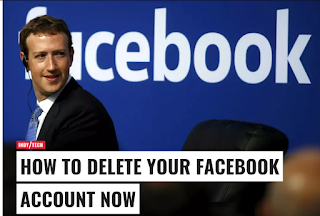How Do I Temporarily Disable My Facebook Account
Taking a Facebook Break, Temporarily or for GoodQ. The Facebook account settings show a deactivate link. Is deactivating an account the same thing as deleting it?
A. Facebook treats deactivation and deletion as two separate states for a member’s account. Deactivation is more of a short-term situation, while deletion is a permanent removal of your presence from the social network.
If you need to take a Facebook timeout for sanity or to work on a project, you can deactivate your account for an indefinite period right in your Facebook preferences. When you are logged into the site, click the menu triangle at the top of the page and choose Settings. In the left column, click Security and then select the “Deactivate your account” option.
Deactivating the account puts your Facebook page out of sight for the duration, and it will not show up in the search results if other users look for you. When you decide to come back, just log into Facebook with the email address and password you used before to reactivate your account. Your Friends list and all of the content you previously posted to your profile are then pulled out of the virtual mothballs and restored to view.
If you opt to permanently delete your Facebook account instead, all the updates, photos, videos and other content you once shared is wiped out for good. You can grab copies of the items you posted — just download a copy of your Facebook archive to take your stuff with you when you go.
Once you are ready, contact Facebook to delete the account. The site does hold off doing anything for a few days in case you change your mind. When you go ahead with the deletion decision, it may take as many as 90 days for the company to fully remove your material from its servers.
ImageGoogle Now takes the data Google has gleaned about you from your Gmail, Google Calendar and other services and then tries to predict the information you will soon need.
Going Home With Google Now
Q. In the Google mobile app, Google Now shows me a map and the traffic for my commute each day, with approximate travel times. How does it know all this?
A. Google Now takes all the data Google has gleaned about you from your Gmail, Google Calendar, Google Maps activity, search history and other services and then tries to predict the information you will soon need based on your past actions. The company can also factor in location information from your phone, tablet or computer, and all of this data goes into the personalized Google Now cards you see on your device’s screen in the Google app.
If you entered your home and work locations when you originally set up Google Now on your device, the service has the information it needs to calculate your route and display it on a map card. Even if you did not specify exact addresses, Google Now can also use location information from your device to make an educated guess about where you live and work, although sometimes it can guess wrong and have you working at the gym or your favorite store. Because Google Maps also incorporates the current traffic and transit conditions into its display, Google Now is able to roughly calculate how long it will take you to get to work by car, public transit or walking.
Google Now is an optional service. If you like parts of it but want to adjust your privacy settings or how the Now cards work, you can do so in the Google app’s settings.
Related Posts:
- Go To Facebook Website
- How To Deactivate Ur Fb Account
- Facebook New Account Create Now Gmail
- Where Do I Change My Name On Facebook
- How To Check Sent Request On Facebook
- Is There Any Way To Get Back Deleted Facebook Mess...
- How Do I See Deleted Messages On Facebook
- Please Open My Facebook For Me
- How Deactivate Facebook Permanently
- Fb Name Change

0 comments:
Post a Comment
Facebook has greatly reduced the distribution of our stories in our readers' newsfeeds and is instead promoting mainstream media sources. When you share to your friends, however, you greatly help distribute our content. Please take a moment and consider sharing this article with your friends and family. Thank you.